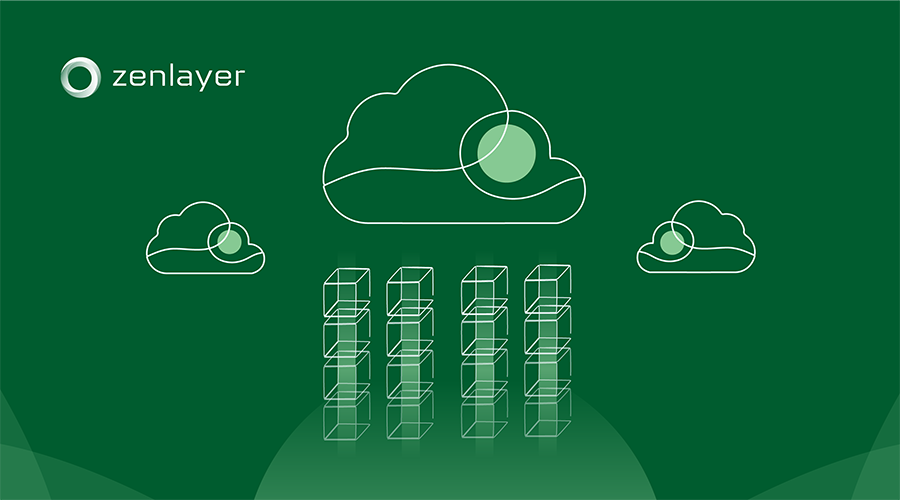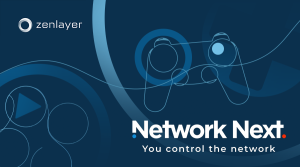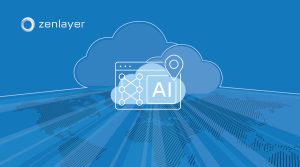In developing an IT strategy, a common mistake is assuming that newer solutions will completely eclipse older ones. It’s a fallacy that seems permanently hardwired into our brains with people over the years assuming cars would completely replace bicycles, the phone meant the end of writing letters, TV would do away with the radio—or more recently: e-books would eliminate real books.
In fact, it’s rare that the new completely vanquishes the old, as evidenced by the fact that people still ride bikes, write letters, listen to the radio and read actual, paper-bound books. Instead of disappearing from the scene, once dominant technologies tend to find new roles. In fact, something like that is happening right now with cloud and bare metal computing and the phenomenon of cloud repatriation
No more one-way ticket to the cloud
Not long ago, it seemed as if the IT world had bought a one-way ticket to the cloud. The major hyperscalers—AWS, Azure, Google, Alibaba—seemed destined to become the de facto data centers for organizations everywhere. By making it so easy to spin up solutions in the cloud, what reason would any enterprise have to go the bare metal route? Well, it turns out, many enterprises—including many with big cloud investments—are finding lots of reasons.
Cloud repatriation—migrating workloads out of the cloud and back to bare metal (privately hosted or 3rd party managed)—has become a bona fide trend. In a Barclay’s CIO survey, 83% of enterprise CIOs said they planned to repatriate at least some workloads, a significant jump from 43% just a few years ago. An IDC study found similar results and a survey by Citrix found that 42% of organizations surveyed in the United States are either considering or already have repatriated at least half of their cloud-based workloads.
Why the pendulum is swinging to bare metal
The move back to bare metal is first and foremost a measure of the cloud’s dominant role in today’s IT world. The spending pendulum shifted decisively from on-premises to cloud around 2020 and has just kept going. Many workloads are there because of the cloud’s one-two punch of low price-of-entry followed by easy, on-demand scalability. But over time, many organizations (or even just specific applications within organizations) hit a natural limit on their IT consumption and that one-two punch loses a lot of its appeal. Why pay a premium for ease-of-entry and on-demand scalability when those features don’t matter as much? Hence, cloud repatriation.
Another factor driving repatriation is the chronic overprovisioning that seems endemic to the cloud. To ensure that scalability kicks in right away, organizations routinely buy more compute and storage than they need. Again, that’s okay when cloud consumption is small, but as it grows over time all of that overprovisioning gets expensive. In studies such as Flexera’s State of the Cloud annual survey, IT managers themselves routinely estimate that 27-28% of their cloud spend is wasted.
More latency-sensitive applications
It’s not just cost issues that are driving repatriation—performance on latency-sensitive applications is another key factor. For traditional business applications, latency was an annoying fact-of-life, but secondary to larger concerns such as uptime. Now so many applications—such as ecommerce, financial trading, online gaming, live sports betting and almost anything involving video—are very latency sensitive. Even a few extra milliseconds that get added by a roundtrip to the cloud can render those applications useless.
At Zenlayer, we see the cloud latency scenario playing out over and over. Clients come to us initially complaining about latency on their network and want to take advantage of our superfast 130+ Tbps global backbone. But after reviewing their needs, we discover it’s not just a networking issue. In many instances they are relying on centrally located cloud providers when they would be much better off deploying their own bare metal solutions closer to where data is actually being generated and/or used.
Bare metal advantages
The switch to bare metal opens the door to a range of benefits that are simply not available through hyperscalers:
- The flexibility to deploy compute power and storage where it will have the biggest impact.
- The ability to put together the right combination of hardware capabilities.
- Full control over the software stack: operating system, middleware and application layer.
- Instead of being restricted to proprietary systems on the public cloud, take full advantage of applicable open-source solutions, avoiding vendor lock-in and saving on licensing fees.
- Get more options for establishing a security framework that addresses your specific risk profile and compliance requirements.
Big savings are possible
And then there are the cost savings of going from cloud to bare metal, which can be significant. Consider this cloud vs. bare metal cost analysis for a hypothetical SaaS company running a large-scale but highly predictable database workload:
SaaS provider in the cloud using AWS EC2 instances with high memory and storage:
- 12 AWS EC2 r6i.8xlarge instances: $40,000 a month
- 20 TB of EBS io2 Block Storage: $8-10,000 per month
- Outbound data transfer costs: $50,000 per month
You can see how things can quickly get into the $100,000 a month range. Now let’s see the cost difference if this same SaaS company switched to a bare metal colocation provider.
SaaS provider on bare metal:
To lease a dozen high-performance servers with 20 TB of NVMe storage plus colocation, networking and data transfer fees (the last likely to be included or provided at a significantly reduced rate) figure $25-$35,000 per month. That’s it.
Bare metal an interim step?
Does cloud repatriation spell the end of the cloud? Hardly. And bare metal isn’t a solution for every situation either. In fact, for many organizations that are making the cloud repatriation journey, bare metal is likely to be an interim step on the way to more virtualization in a hybrid private/public cloud environment
As the example of the SaaS provider cited above demonstrates, bare metal servers are a great choice for predictable, compute-intensive workloads. If, in addition, the applications are highly latency sensitive and/or there’s a need for direct hardware access—now you’ve got an overwhelming case for going bare metal.
However, if the goals are versatility, agility and efficiency across a wide range of applications, bare metal loses out to VMs. With VMs, enterprises can quickly adapt to evolving requirements without the need for significant hardware changes—while still keeping the setup under the control of the enterprise. That makes VMs a better choice for cloud repatriation efforts where flexibility and management efficiency are priorities.
Hybrid cloud: the balanced approach to repatriation
Ultimately all of these options—bare metal/bare metal as a service, VMs/VMs as a service, public cloud hyperscalers—all have their place. That’s why for organizations that are serious about optimizing performance, cost, and flexibility, the future is hybrid. A hybrid approach gives you options so you can move workloads based on the needs of the business and application.
That’s the reason Zenlayer offers bare metal, VMs and also a full range of cloud connect options:
- Dedicated bare metal servers available in 60+ cities across 40+ countries ready to deploy in minutes.
- VMs built on top of Zenlayer’s bare metal infrastructure, providing high-performance and cost-effective instances.
- Dedicated connections to the world’s top clouds for improved latency, security, and reliability.
With these options, you can take advantage of a private infrastructure when performance, latency or security issues dictate it. Or leverage the easy startup/scalability of the public cloud. You’re also enjoying the increased resilience that comes from distributing workloads across multiple environments. And you’re building protection against ever-rising data egress fees.
Being hybrid is the natural State of affairs
While cars are our dominant form of transportation, bikes remain popular. Sales of eBooks grow every year, but print books still dominate the publishing market. Bare metal, VMs and public clouds have all had their day in the sun—and they remain viable options
It seems as if being hybrid is really the natural state of things. When good options are available, you would be foolish not to use them.
And that’s ultimately what cloud repatriation is all about.
If your organization is considering cloud repatriation, talk to a cloud expert today to see how we can help.







